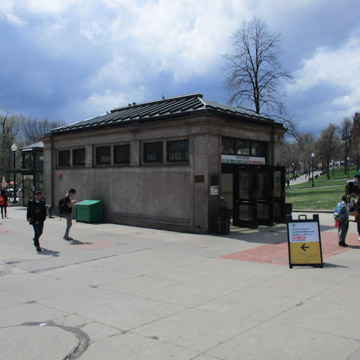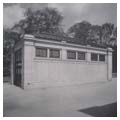Two granite kiosks with copper roofs mark the entrances to Boston's principal subway station—the first underground system in the United States. The earlier remodeling of the station attempted to preserve the turn-of-the-twentieth-century appearance—with
In 2003, Wall USA, a subsidiary of the German firm Wall AG, provided the design for bus shelters and aboveground stops on the Green Lines, whose industrial aesthetic of metal and cable with sleek curved glass surfaces is indebted to European transit systems.




















